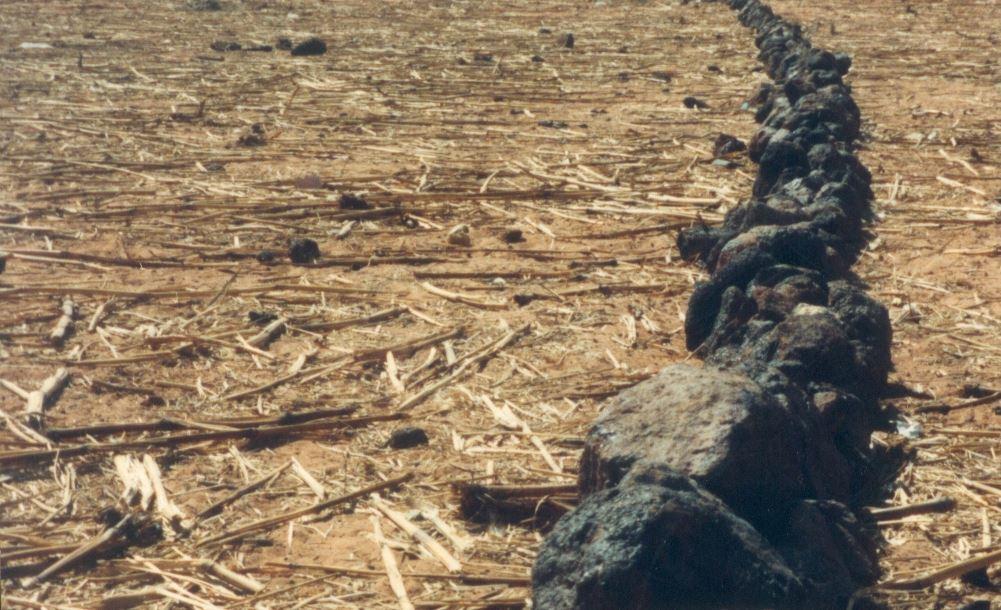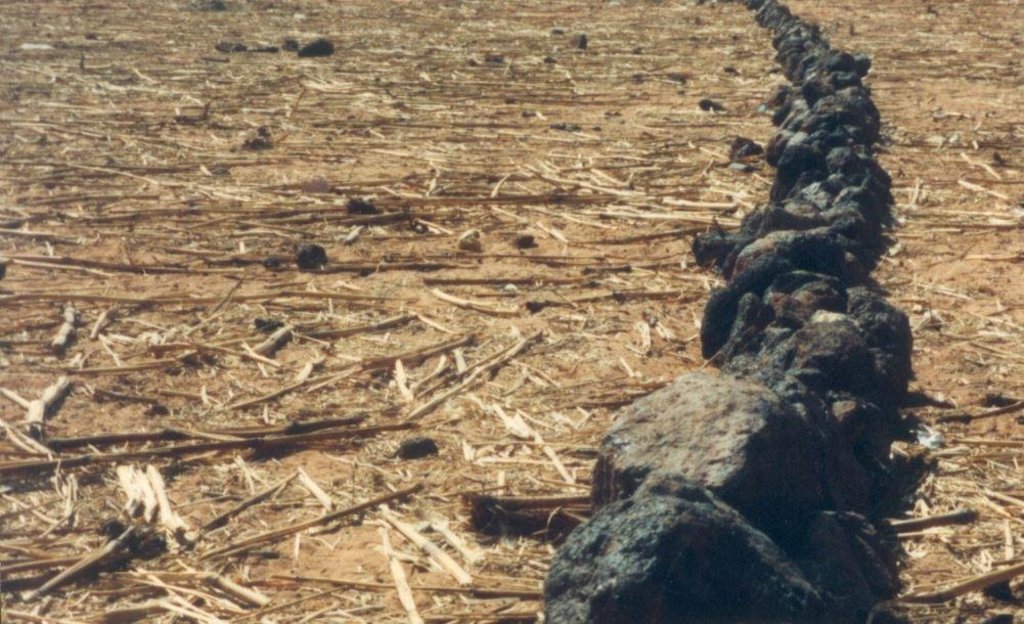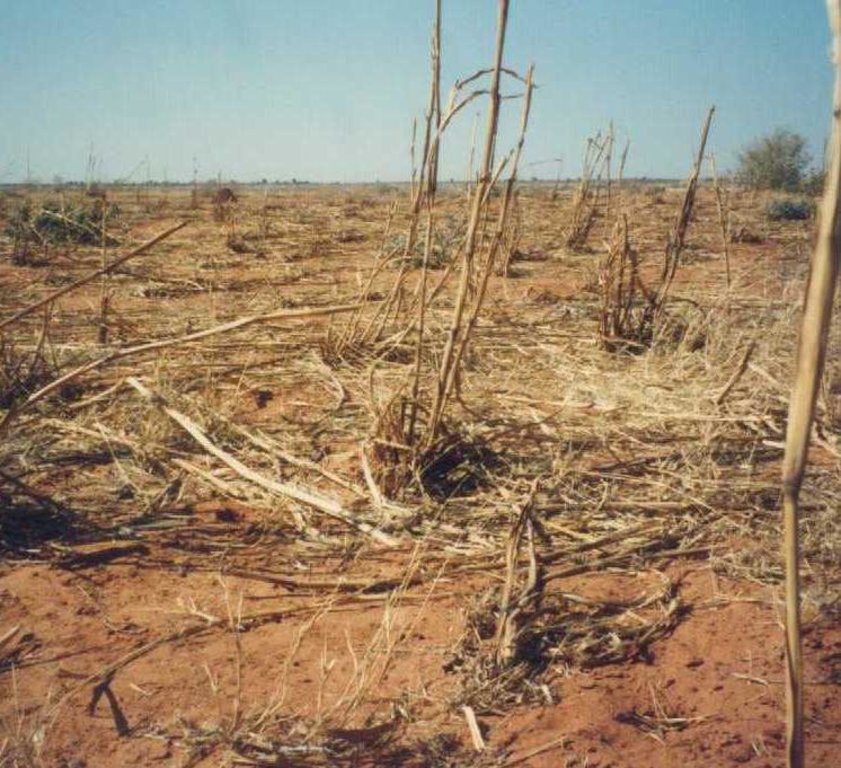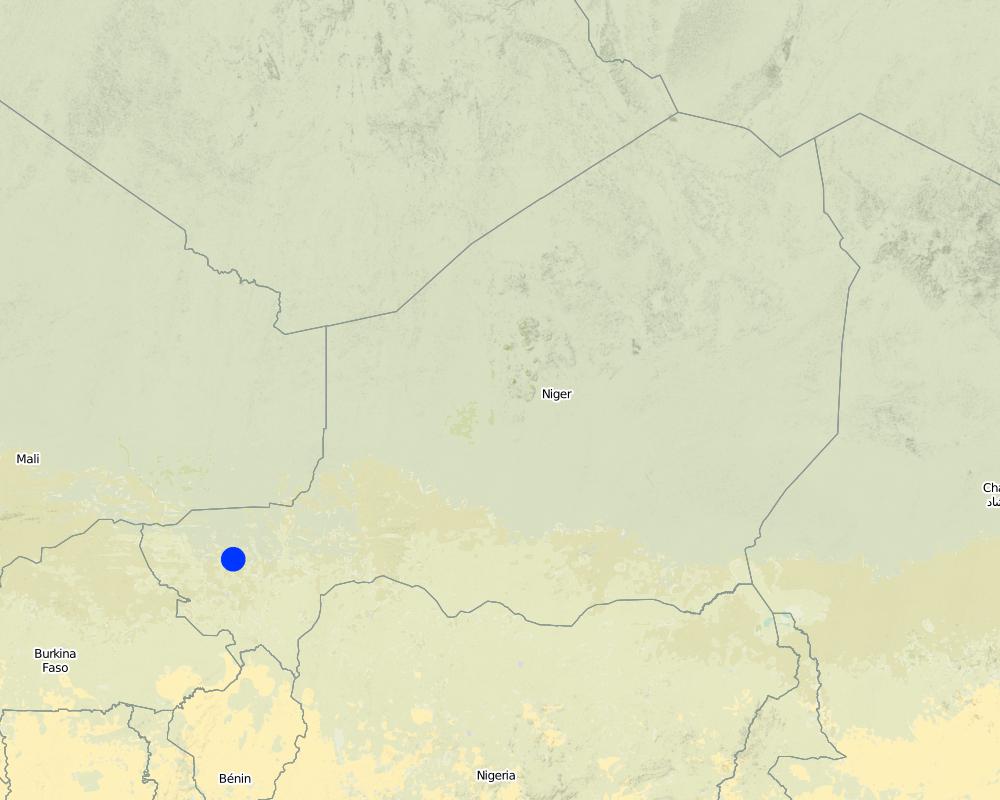Mulching [尼日尔 ]
- 创建:
- 更新:
- 编制者: Dieter Nill
- 编辑者: –
- 审查者: David Streiff, Alexandra Gavilano
Paillage (French)
technologies_1222 - 尼日尔
查看章节
全部展开 全部收起1. 一般信息
1.2 参与该技术评估和文件编制的资源人员和机构的联系方式
SLM专业人员:
Dorlöchter-Sulser Sabine
Misereor
德国
SLM专业人员:
Mamadou Abdou Gaoh Sani
Programme d’Appui à l’agriculture Productive
尼日尔
有助于对技术进行记录/评估的项目名称(如相关)
Programme d’Appui à l’agriculture Productive (GIZ / PROMAP)有助于对技术进行记录/评估的机构名称(如相关)
Misereor - 德国有助于对技术进行记录/评估的机构名称(如相关)
Deutsche Gesellschaft für Internationale Zusammenarbeit (GIZ) - 德国1.3 关于使用通过WOCAT记录的数据的条件
编制者和关键资源人员接受有关使用通过WOCAT记录数据的条件。:
是
2. SLM技术的说明
2.1 技术简介
技术定义:
Covering the soil with mulch protects it against wind and water erosion and provides nutrients which has a positive effect on yields and food security.
2.2 技术的详细说明
说明:
Mulching involves spreading millet and sorghum stalks, etc. on cropland after harvesting. This technique can be used on any kind of cropland and is also effective for restoring infertile patches.
Purpose of the Technology: The stalks spread over the land at the very beginning of the dry season improve the infiltration of water, reduce the evaporation of moisture from the soil and act as a barrier to prevent wind erosion, retaining the thin layer of soil and trapping the rich dust carried by the harmattan wind. Covering the soil with mulch also protects it against water erosion. Through the action of termites, the stalks and branches decompose and are gradually incorporated into the soil, fertilising it and improving its structure.
Mulching has a positive effect on yields and therefore contributes to improving household food security. It mitigates the effects of climate change and increased rainfall variability.
In the area covered by the PASP project in Niger, an analysis was carried out to assess the effectiveness of contour stone bunds used on their own and stone bunds used in conjunction with mulching. It was found that plots with contour stone bunds only produce an average millet grain yield of 266 kg per hectare, while those with contour stone bunds plus mulching average 395 kg per hectare. The difference between the two − 129 kg − can be considered to be the positive effect of mulching.
Establishment / maintenance activities and inputs: Mulching has to be carried out each year. Around 2 tonnes per hectare per year is recommended, which is 2 or 3 stalks per m2.
Natural / human environment: This technique is implemented on individual plots. Livestock generally graze on the millet and sorghum stalks, or they are cut down and transported for use as fodder for animals being fattened in the dry season. This technique is therefore used in places where there is sufficient forage for livestock herds. It can be combined with any other erosion control technique, such as contour stone bunds and grass strips.
2.3 技术照片
2.5 已应用该技术的、本评估所涵盖的国家/地区/地点
国家:
尼日尔
区域/州/省:
Niger, Burkina Faso
有关地点的进一步说明:
Regions of Tillabéri, Filingué, Ouallam, Téra and Tahoua in Niger, Bam Region in Burkina Faso
具体说明该技术的分布:
- 均匀地分布在一个区域
如果不知道精确的区域,请注明大致覆盖的区域:
- > 10,000 平方千米
Map
×2.6 实施日期
如果不知道确切的年份,请说明大概的日期:
- 10-50年前
2.7 技术介绍
详细说明该技术是如何引入的:
- 通过项目/外部干预
注释(项目类型等):
Developed, implemented and disseminated as part of projects and programmes undertaken from the 1980s onwards to combat desertification and improve natural resource management. Implemented by German Development Cooperation (BMZ, GIZ, KfW) in several projects e.g. PDRT (Projet de développement rural de Tahoua, Niger), PASP (Projet de protection intégrée des ressources agro-sylvo-pastorales Tillabéri-Nord, Niger), PATECORE (project for land development and resource conservation in Plateau Central, Burkina Faso)
3. SLM技术的分类
3.1 该技术的主要目的
- 改良生产
- 减少、预防、恢复土地退化
- 减缓气候变化及其影响
3.2 应用该技术的当前土地利用类型
同一土地单元内混合使用的土地::
是
具体说明混合土地使用(作物/放牧/树木):
- 农林牧业

农田
- 一年一作
- 乔木与灌木的种植
年作 - 具体指明作物:
- 油料作物 - 花生
- 谷类 - 小米
- 谷类 - 高粱
- 豆科牧草和豆类 - 豌豆
乔木和灌木种植 - 指定作物:
- 芒果、山竹果、番石榴
每年的生长季节数:
- 1
具体说明:
Longest growing period in days: 120; Longest growing period from month to month: August to October

牧场
粗放式放牧:
- 游牧
- 半游牧畜牧业
集约放牧/饲料生产:
- 收割和携带/零放牧
- 改良牧场

森林/林地
- (半天然)天然森林/林地
(半天然)天然森林/林地:具体说明管理类型:
- 选伐
产品和服务:
- 木材
- 薪材
- 水果和坚果
- 其它森林产品
- 放牧/啃牧
注释:
Major land use problems (compiler’s opinion): soil fertility decline, soil erosion by wind and water, surface runoff
Nomadism: Yes
Semi-nomadism / pastoralism: Yes
Cut-and-carry/ zero grazing: Yes
Improved pasture: Yes
Other grazingland: agropastoralism
Selective felling of (semi-) natural forests: Yes
Forest products and services: timber, fuelwood, fruits and nuts, grazing / browsing, other forest products / uses (honey, medical, etc.)
Type of cropping system and major crops comments: farmers are mainly agropastoralists with some communities specialised on pure pastoralism
Constraints of common grazing land
Constraints of forested government-owned land or commons
Livestock density: 1-10 LU /km2
3.4 供水
该技术所应用土地的供水:
- 雨养
注释:
Water supply: Also mixed rainfed - irrigated and post-flooding
3.5 该技术所属的SLM组
- 改良的地面/植被覆盖
- 横坡措施
3.6 包含该技术的可持续土地管理措施

农艺措施
- A2:有机质/土壤肥力
注释:
Type of agronomic measures: mulching
3.7 该技术强调的主要土地退化类型

土壤水蚀
- Wt:表土流失/地表侵蚀

土壤风蚀
- Et:表土流失

化学性土壤退化
- Cn:肥力下降和有机质含量下降(非侵蚀所致)

生物性退化
- Bc:植被覆盖的减少
- Bq:数量/生物量减少
- Bl:土壤寿命损失

水质恶化
- Ha:干旱化
注释:
Secondary types of degradation addressed: Ha: aridification
Main causes of degradation: soil management (Unadapted land use methods, reduced or abandoned fallow periods), crop management (annual, perennial, tree/shrub) (Neglect of fallow periods and crop rotation), droughts (due to heat waves), population pressure (rapidly growing population increasing pressure on land), poverty / wealth (poor population)
Secondary causes of degradation: over-exploitation of vegetation for domestic use (use of straw for fodder and roof thatching), change in temperature (Climate change: heat waves), change of seasonal rainfall (more variable onset of rain), Heavy / extreme rainfall (intensity/amounts) (more variable and intensive rains), wind storms / dust storms (frequent storms), floods (due to intensive rain storms)
3.8 防止、减少或恢复土地退化
具体数量名该技术与土地退化有关的目标:
- 减少土地退化
- 修复/恢复严重退化的土地
注释:
Secondary goals: mitigation / reduction of land degradation
4. 技术规范、实施活动、投入和成本
4.1 该技术的技术图纸
技术规范(与技术图纸相关):
Technical knowledge required for field staff / advisors: moderate
Technical knowledge required for land users: low
Main technical functions: control of dispersed runoff: impede / retard, improvement of ground cover, increase of surface roughness, improvement of surface structure (crusting, sealing), improvement of topsoil structure (compaction), increase in organic matter, increase in nutrient availability (supply, recycling,…), increase of infiltration, increase / maintain water stored in soil, reduction in wind speed, increase of biomass (quantity)
Secondary technical functions: sediment retention / trapping, sediment harvesting
Mulching
Material/ species: millet and sorghum stalks, etc
4.5 维护/经常性活动
| 活动 | 时间/频率 | |
|---|---|---|
| 1. | The stalks are spread over the land at the beginning of the dry season. Mulching has to be carried out each year. |
4.7 影响成本的最重要因素
描述影响成本的最决定性因素:
• Labour for mulching: 1.5 man-days per ha.
• Straw for mulching: (2 t per ha per year)
5. 自然和人文环境
5.1 气候
年降雨量
- < 250毫米
- 251-500毫米
- 501-750毫米
- 751-1,000毫米
- 1,001-1,500毫米
- 1,501-2,000毫米
- 2,001-3,000毫米
- 3,001-4,000毫米
- > 4,000毫米
农业气候带
- 半干旱
Thermal climate class: subtropics
5.2 地形
平均坡度:
- 水平(0-2%)
- 缓降(3-5%)
- 平缓(6-10%)
- 滚坡(11-15%)
- 崎岖(16-30%)
- 陡峭(31-60%)
- 非常陡峭(>60%)
地形:
- 高原/平原
- 山脊
- 山坡
- 山地斜坡
- 麓坡
- 谷底
垂直分布带:
- 0-100 m a.s.l.
- 101-500 m a.s.l.
- 501-1,000 m a.s.l.
- 1,001-1,500 m a.s.l.
- 1,501-2,000 m a.s.l.
- 2,001-2,500 m a.s.l.
- 2,501-3,000 m a.s.l.
- 3,001-4,000 m a.s.l.
- > 4,000 m a.s.l.
关于地形的注释和进一步规范:
Landforms: Also footslopes and valley floors
Altitudinal zone: 200 m a.s.l.
5.3 土壤
平均土层深度:
- 非常浅(0-20厘米)
- 浅(21-50厘米)
- 中等深度(51-80厘米)
- 深(81-120厘米)
- 非常深(> 120厘米)
土壤质地(表土):
- 中粒(壤土、粉土)
- 细粒/重质(粘土)
表土有机质:
- 低(<1%)
如有可能,附上完整的土壤描述或具体说明可用的信息,例如土壤类型、土壤酸碱度、阳离子交换能力、氮、盐度等。:
Soil texture: Fine to medium (sandy to clayey loams)
Soil fertility is very low - medium
Soil drainage / infiltration is poor - medium
Soil water storage capacity is low - medium
5.4 水资源可用性和质量
地下水位表:
5-50米
地表水的可用性:
中等
水质(未处理):
仅供农业使用(灌溉)
关于水质和水量的注释和进一步规范:
Ground water table: > 10 m
Availability of surface water: Surface runoff generated by limited but intense rainfalls
5.5 生物多样性
物种多样性:
- 低
5.6 应用该技术的土地使用者的特征
生产系统的市场定位:
- 生计(自给)
- 混合(生计/商业)
非农收入:
- 收入的10-50%
相对财富水平:
- 非常贫瘠
- 贫瘠
机械化水平:
- 手工作业
- 畜力牵引
性别:
- 男人
说明土地使用者的其他有关特征:
Population density: 10-50 persons/km2
Annual population growth: 3% - 4%
(mostly poor households below poverty line).
Off-farm income specification: men migrate temporarily or permanently to cities for off-farm income, women and men seasonally carry out paid farm work
Market orientation of production system: Most households crop for subsistence ( mainly for small agropastoralists) and surplus is sold on market (medium agropastoralists). Commercial markets: some vegetable growing and pastoralists.
Level of mechanization: Ox and donkey used for animal traction
5.7 应用该技术的土地使用者使用的平均土地面积
- < 0.5 公顷
- 0.5-1 公顷
- 1-2 公顷
- 2-5公顷
- 5-15公顷
- 15-50公顷
- 50-100公顷
- 100-500公顷
- 500-1,000公顷
- 1,000-10,000公顷
- > 10,000公顷
这被认为是小规模、中规模还是大规模的(参照当地实际情况)?:
- 小规模的
注释:
Average area of land owned or leased by land users applying the Technology: Also 1-2 ha
5.8 土地所有权、土地使用权和水使用权
土地所有权:
- 州
- 社区/村庄
- not titled
土地使用权:
- 社区(有组织)
- 个人
注释:
traditional land use rights prevail. On fields individual land use rights, communal rights on pasture and forest land (collection of wood and other products (fruits, medicinal plants))
5.9 进入服务和基础设施的通道
健康:
- 贫瘠
- 适度的
- 好
教育:
- 贫瘠
- 适度的
- 好
技术援助:
- 贫瘠
- 适度的
- 好
就业(例如非农):
- 贫瘠
- 适度的
- 好
市场:
- 贫瘠
- 适度的
- 好
能源:
- 贫瘠
- 适度的
- 好
道路和交通:
- 贫瘠
- 适度的
- 好
饮用水和卫生设施:
- 贫瘠
- 适度的
- 好
金融服务:
- 贫瘠
- 适度的
- 好
6. 影响和结论性说明
6.1 该技术的现场影响
社会经济效应
生产
作物生产
生产故障风险
水资源可用性和质量
灌溉用水需求
收入和成本
农业收入
社会文化影响
食品安全/自给自足
SLM/土地退化知识
冲突缓解
注释/具体说明:
Competing uses for harvest waste
livelihood and human well-being
注释/具体说明:
Mulching has a positive effect on yields and therefore contributes to improving household food security
生态影响
水循环/径流
地表径流
蒸发
土壤
土壤水分
土壤覆盖层
土壤流失
土壤结壳/密封
土壤压实
养分循环/补给
土壤有机物/地下C
生物多样性:植被、动物
生物量/地上C
有益物种
减少气候和灾害风险
干旱影响
风速
6.2 该技术的场外影响已经显现
下游洪水
下游淤积
风力搬运沉积物
对邻近农田的破坏
6.3 技术对渐变气候以及与气候相关的极端情况/灾害的暴露和敏感性(土地使用者认为的极端情况/灾害)
渐变气候
渐变气候
| 季节 | 增加或减少 | 该技术是如何应对的? | |
|---|---|---|---|
| 年温度 | 增加 | 好 |
气候有关的极端情况(灾害)
气象灾害
| 该技术是如何应对的? | |
|---|---|
| 局地暴雨 | 不好 |
| 局地风暴 | 不好 |
气候灾害
| 该技术是如何应对的? | |
|---|---|
| 干旱 | 好 |
水文灾害
| 该技术是如何应对的? | |
|---|---|
| 比较和缓的(河道)洪水 | 不好 |
其他气候相关的后果
其他气候相关的后果
| 该技术是如何应对的? | |
|---|---|
| 缩短生长期 | 未知 |
6.4 成本效益分析
技术收益与技术建立成本相比如何(从土地使用者的角度看)?
短期回报:
积极
长期回报:
积极
技术收益与技术维护成本/经常性成本相比如何(从土地使用者的角度看)?
短期回报:
积极
长期回报:
积极
6.5 技术采用
注释:
Comments on acceptance with external material support: Technology is very simple.
Comments on spontaneous adoption: Technology can be applied without any external input.
There is a moderate trend towards spontaneous adoption of the Technology
Comments on adoption trend: There are competing uses for straw. Straw can be used as forage, as a construction material and for mulching. It is now becoming increasingly common for straw to be collected and stored systematically to serve as forage reserves in the dry season. It is then not available anymore for mulching.
6.7 该技术的优点/长处/机会
| 编制者或其他关键资源人员认为的长处/优势/机会 |
|---|
| This technique is useful for restoring infertile patches of cropland. It also improves the soil’s physical and chemical properties and reactivates biological activity |
| Covering the soil with mulch protects it against wind and water erosion and provides nutrients. |
| Mulching has a positive effect on yields and therefore contributes to improving household food security. |
| It mitigates the effects of climate change and increased rainfall variability. |
6.8 技术的弱点/缺点/风险及其克服方法
| 编制者或其他关键资源人员认为的弱点/缺点/风险 | 如何克服它们? |
|---|---|
| Harvest waste is often a source of conflict between livestock keepers and farmers. In Niger, the date when crop fields are opened to livestock keepers is set in each region by representatives of different user groups and the government. Increasingly, there are competing uses for harvest waste. Straw can be used as forage, as a construction material and for mulching. It is now becoming increasingly common for straw to be collected and stored systematically to serve as forage reserves in the dry season. |
7. 参考和链接
7.1 信息的方法/来源
7.3 链接到网络上的相关信息
标题/说明:
Good Practices in Soil and Water Conservation. A contribution to adaptation and farmers resilience towards climate change in the Sahel. Published by GIZ in 2012.
URL:
http://agriwaterpedia.info/wiki/Main_Page
链接和模块
全部展开 全部收起链接
无链接
模块
无模块





